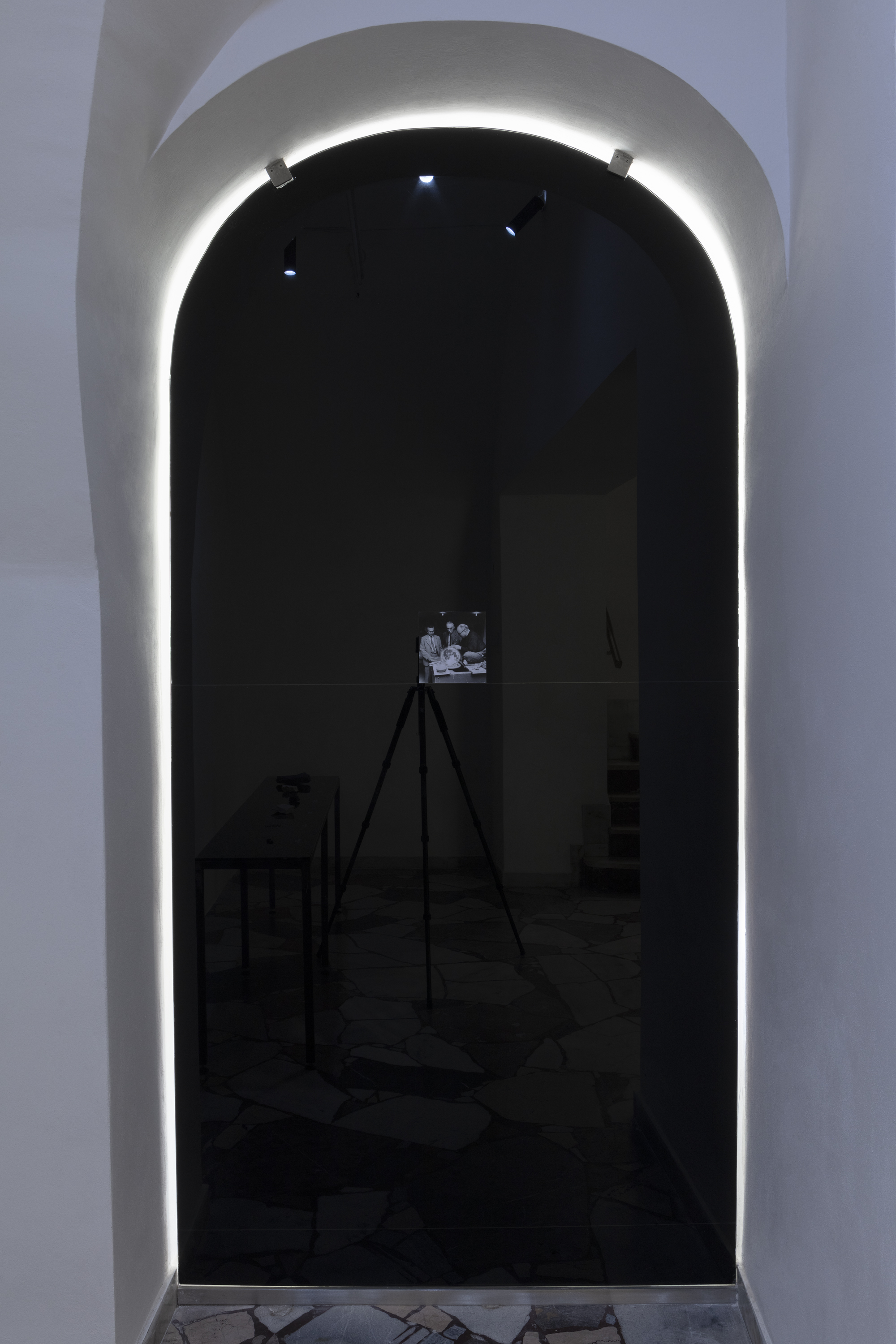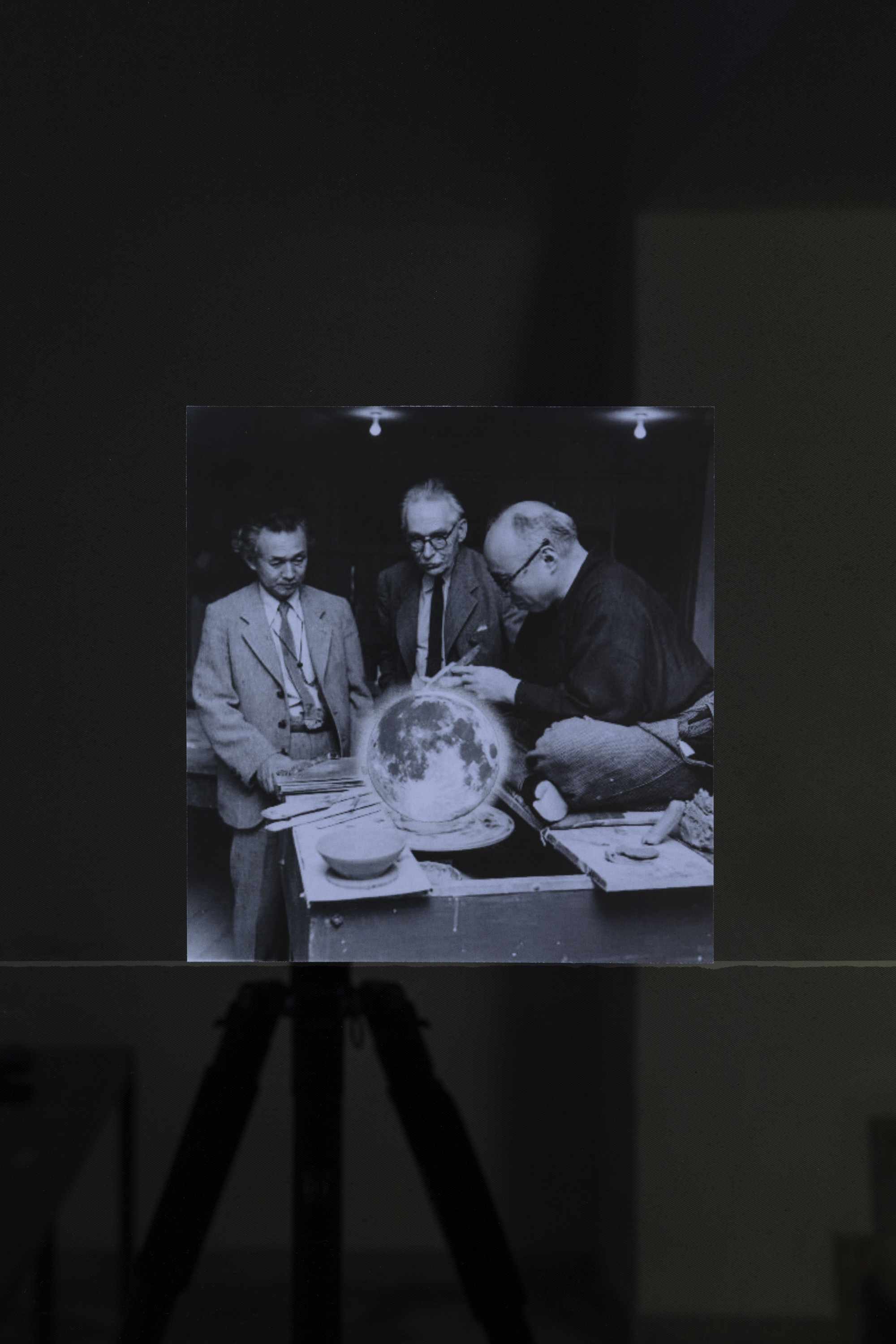










Alternating between Seoul, Vienna and Dresden, Korean artist Yeonwoo Chang focuses on cultural, historical and political themes that transcend the realm of East Asian identity. She integrates both physical and digital media into her creative practice, primarily using ceramics, installation, sound, video, and performance. Through these artistic practices, she explores (natural) resources and the potential of their infrastructure, human labor, craft, cultural heritage and symbols within the context of international politics. Her works are a specific form of interdisciplinary projects and research linking science and cultural aesthetics.
The Moon Jar Project installation develops a multilayered discourse on (post)colonialism, territorial acquisition, and cultural symbols. Ideologically, it revolves around the moon, a tangible entity that is Earth's only natural satellite, a precious resource, a territorial asset, and a space for the visible demonstration of geopolitical and cultural power. For the inhabitants of Earth, it is a cosmic object recognizable to the naked eye, its power influencing the course of life on its surface. As the nearest celestial body, the Moon has also been the subject of astronautical research for many years and is the only place ever visited by a human space crew.
Typically, a wider base and narrower neck are chosen for stability in ceramic vases and jars, but lunar vessels have the opposite design. The neck is wider than the bottom diameter, contributing to the optical illusion of the vessel wobbling or floating in the air. During the era of Japanese colonialism, beginning in the late 19th and early 20th centuries, these vessels made their way abroad and influenced modern pottery culture. They were attractive not only for their relatively robust form and production technique but also for their slight irregularity, resembling the shape of a waning moon rather than a full moon.
Similarly, the two Yeonwoon Chang ceramic vessels look different when viewed from different sides, forcing a search for harmony in asymmetry. Both vessels are glazed with a material derived from what's known as Highland Lunar Simulant (featured on the left side of the installation) and Land Lunar Simulant (featured on the right side). This glaze is extracted from synthetic regolith dust composed of artificial minerals, replicating the composition of lunar regolith brought to Earth by NASA in 1969. Since the 1970s, this artificial lunar dust has been the focus of research institutes worldwide, exploring various physical properties of the lunar surface. By linking the moon as a geopolitical territory and ceramics as a cultural artefact, the author opens up a debate on (post)colonialism and the value of human craftsmanship. The Moon Jar Project thus serves as a window through which we can explore the symbolic and economic significance of cultural artifacts housed in international museums.
The museum-research character of the exhibition, as well as its connection with the locality of Brno, is reinforced by a futuristic-looking collection of minerals (basalt, olivine, pyroxenite, feldspar, anorthite) found in the Czech Republic. The selection partially mirrors the composition of the glaze used and the Moravian Museum has lent this collection to the exhibition. The two ceramic vessels—earthly moons—are positioned in a symbolic planetary arrangement.
The minimalist and meditative dimension of the installation is enhanced by a post-produced recording of the sounds from the production process of the exhibited vessels. Clay, the artist's working material and a fundamental substance of the Earth, is thus experienced through all our senses, highlighting themes of the strain on natural resources, the cost of raw materials, and the value and limits of craftsmanship in contemporary art, history, and nature.
In general, the vessel has always been an object that protects and preserves—food, water, medicine, wealth. In times of need, it releases its contents, allowing stored resources to be used once again. However, in the semiotics of various cultures and depth psychology, the vessel also represents the human interior and the woman as a vessel—a symbol of the source of life and spiritual wealth. Yeonwoo Chang, a visual artist, ceramic restorer using the Kintsugi technique, avid cook, and kimchi instructor, uses the minimalist form of one of the oldest crafts to remind us of significant global and intimate issues. These issues are made more urgent by the current political and interpersonal conflicts of unprecedented intensity. The audio-visual installation immerses us in the role of an observer of the (not so distant) utopian colonization of (as yet) autonomous outer space and the use of terrestrial and extraterrestrial resources of our existence.
On Tuesday, June 25, 2024, at 8:07 a.m. CEST, at the time of writing, a few hours before the opening of the exhibition, the Chinese lunar probe Chang-e 6 landed on Earth, bringing the first ever rock samples from the far side of the Moon.
Júlia Bútorová
https://galerie-tic.cz/en/moon-jar-project
https://www.instagram.com/galerie_tic/